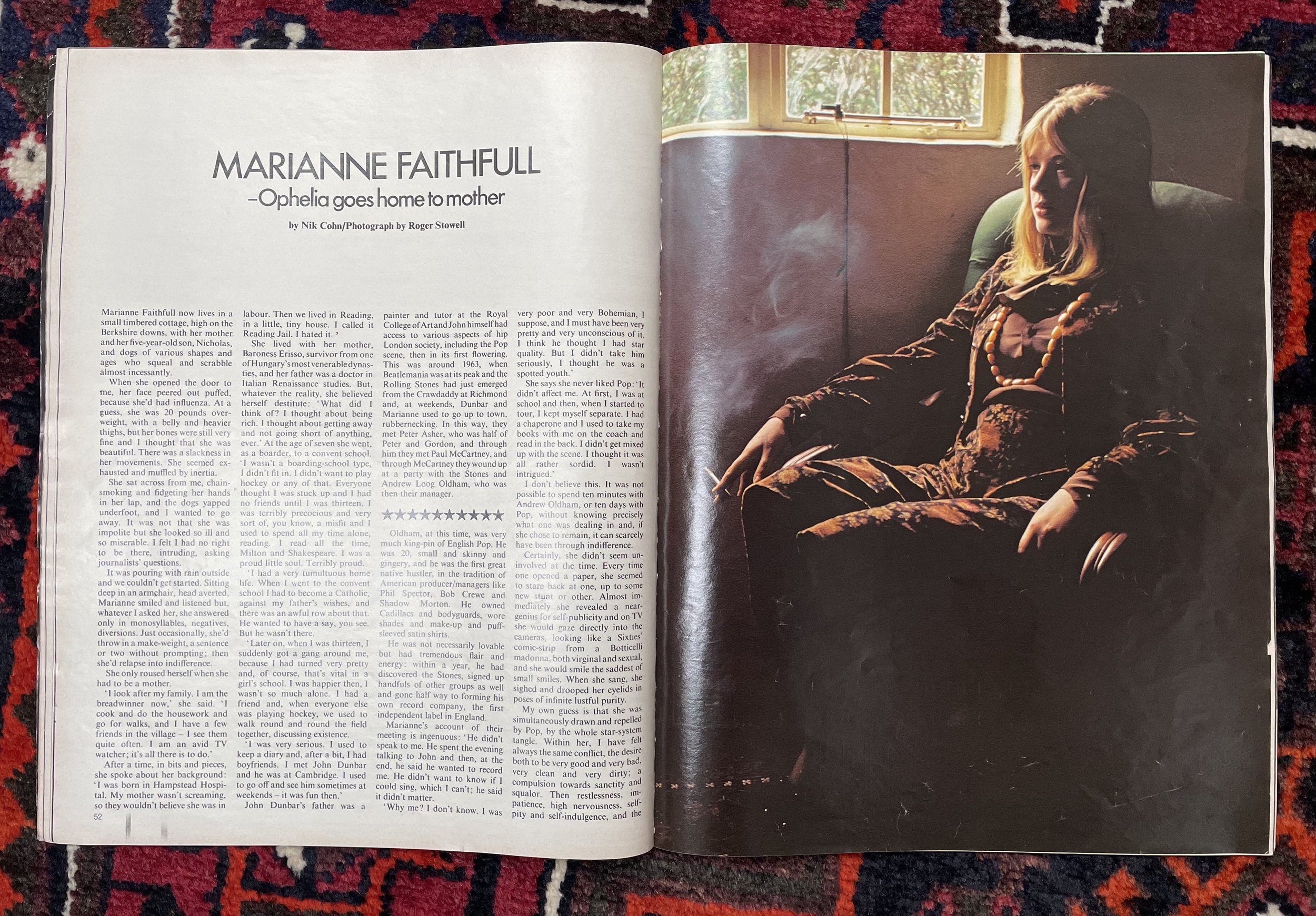‘Private and Public Glamour, Nik Cohn Sifts the Stardust’ Harpers & Queen (February 1973)
The bookends:
Once, in Las Vegas, I was sitting in the lobby of the International Hotel, browsing through a magazine, when I was suddenly afflicted by a buzzing in the back of my skull. I turned my head: there was nothing to look at but a stretch of bare wall and a corner. I stared at the wall for perhaps thirty seconds, feeling most foolish but unable to do otherwise. The buzzing trapped me; I knew that something enormous would happen.
It did. Suddenly Elvis Presley appeared round the corner, flanked by half a dozen body guards. I will not describe him; he was God. Shimmering, he swept away across the lobby and was gone. After a moment the buzzing subsided and I went back to my magazine.
Yet again, as so often when it comes to matters of weight, I return to P. J. Proby. I remember him once at a concert in Leicester, halfway through a riot, grovelling and shrieking on his knees, when suddenly he stopped dead, stared out into the darkness and, in that curious mock-prophetic style of his, spake with tongues. ‘It seems that I must be the greatest thing on earth’, he declaimed. ‘Why, look at you all – screaming and yelling and fighting, loving me, hating me, dying to touch me, dreaming of breaking my neck. You run behind me like lapdogs and shucks, I don’t even exist . . .’
In between, a disquisition on glamour. What is it? What isn’t it? Who has it? Who doesn’t have it?. He asks everyone, except Bobby Dylan, The Beatles and Timothy Leary. ‘New Generation’ artist Patrick Procktor told him glamour is ‘the essence of irresistible allurement, overwhelming all aesthetic judgements’, which works for me and part explains Cohn’s devotion to Proby.
Glamour changes down the decades marked by how the object of enthralment shifts: the fifties was about a sexual physicality, sixties a counter-reaction with aura replacing a sex-glam syndrome – ‘A triumphant return to freakishness, decadence, insanity; lots of violence, swilled down with a dash of perversity; early and melodramatic death where possible, or at least a glut of suffering.’
Andrew Loog Oldham had the ‘flair’ that defined glamour in the sixties and Cohn extols his virtues and vices in his profile of Marianne Faithful for Nova (April 1971), who, after the Stones, was Oldham’s greatest invention. When Cohn meets her she has moved away from the pop limelight, living with her child and mother in a timbered cottage in the Berkshire downs. He describes her as overweight and seemingly ‘exhausted and muffled by inertia’.
After the flair of the Sixties, the seventies had nowhere else to go but to turn to nostalgia, glamour as pastiche of lost dreams.
One of his chosen throwbacks, reincarnations, is David Bowie who Cohn had met and interviewed six months previously. Bowie wants to be a star:
Not a Superstar or a Rock star or any kind of star in particular; just a star, period.
And what was a star? He didn’t know, he couldn’t define it, but he could recognise it by instinct. Then he paused, looked coy; ‘a star is me,’ he said, fluttering his lashes, and suddenly it was.
Harpers & Queen (September 1972)
Rock Dreams, Peellaert and Cohn. Pop’s three generations
As if to make sense of all of this, Cohn returned to his own creation, Arfur the Teenage Pinball Queen. It was a postscript on the media mirage, the ways in which ‘Pop phenomena may be created absolutely out of nothing . . . ‘shucks’ said Proby, ‘I don’t even exist’.
Harpers & Queen (January 1973)
More on Arfur over the page, here





